Solution proposal - exercise 7
Task 1
We are asked to implement a multivariate Gaussian classifier, and use it to classify images using a multiple of different features. I will only list the results in the following, but the source for obtaining these results is available here, and all images used are available here.
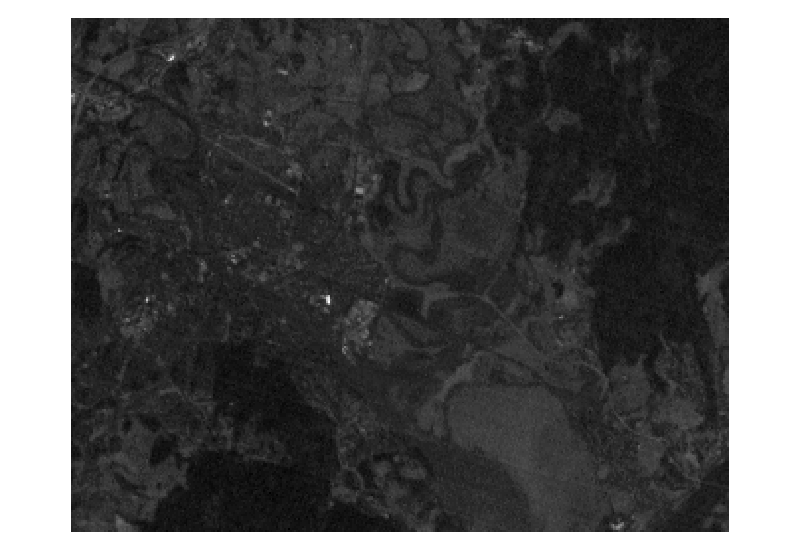
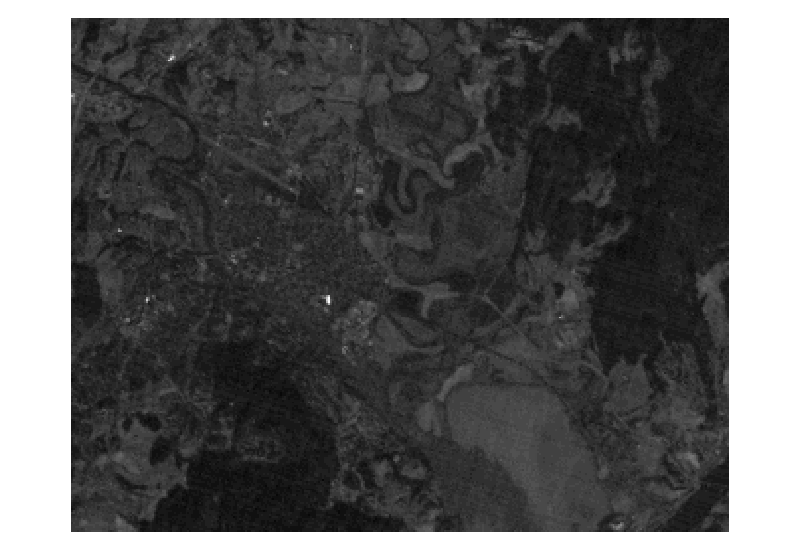
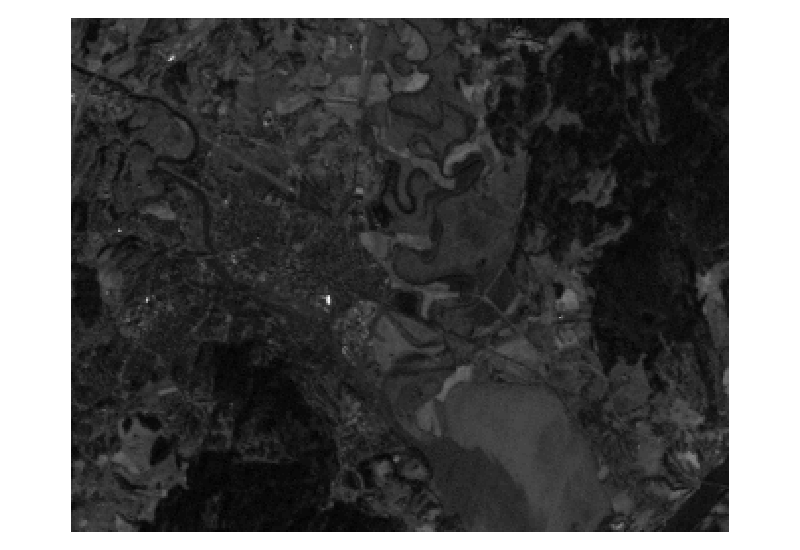
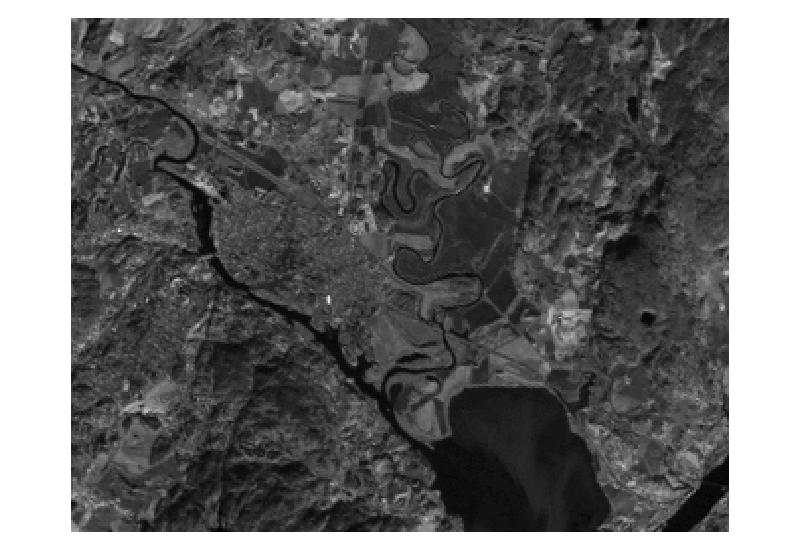
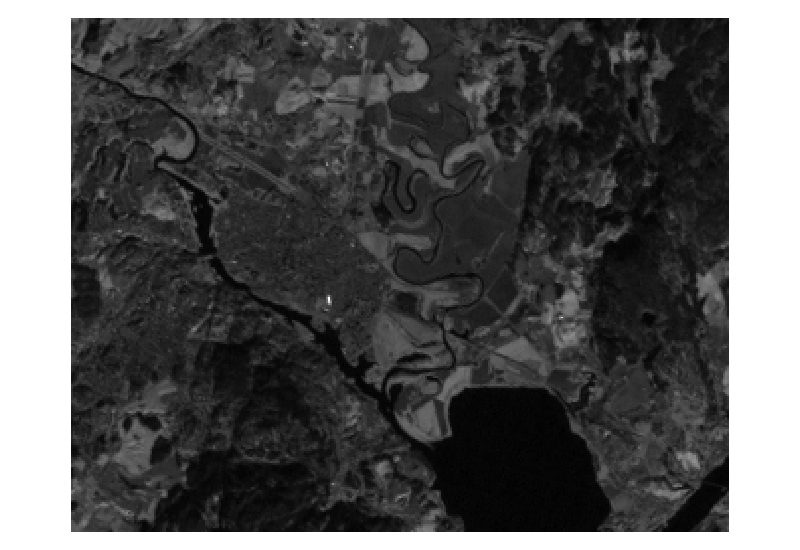

The following masks where used to obtain training features, and test features, respectively.
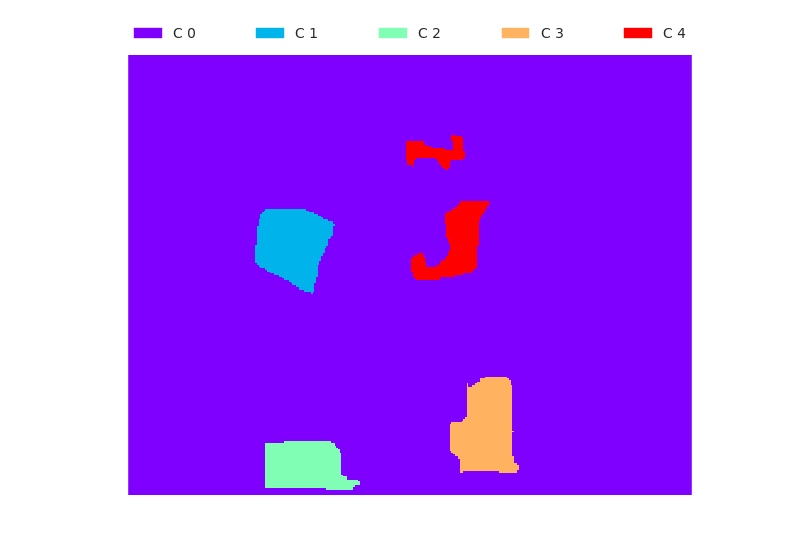
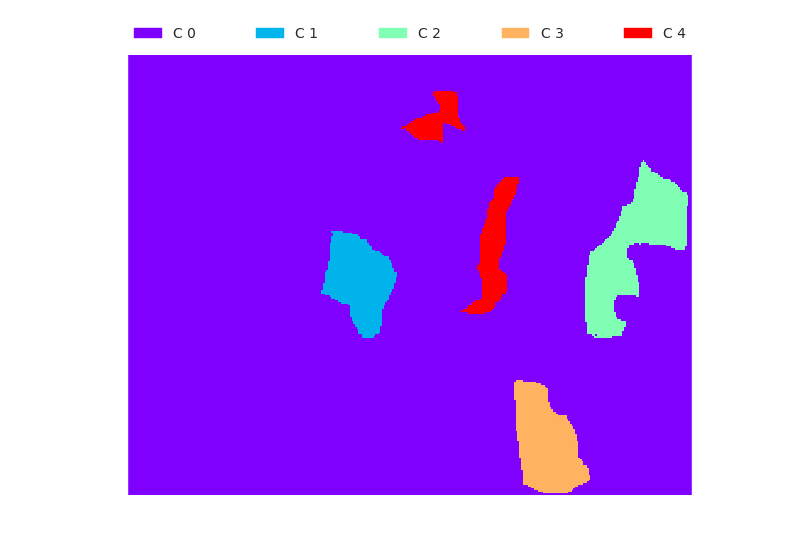
One single feature image
Here we are only using feature image tm1.png.

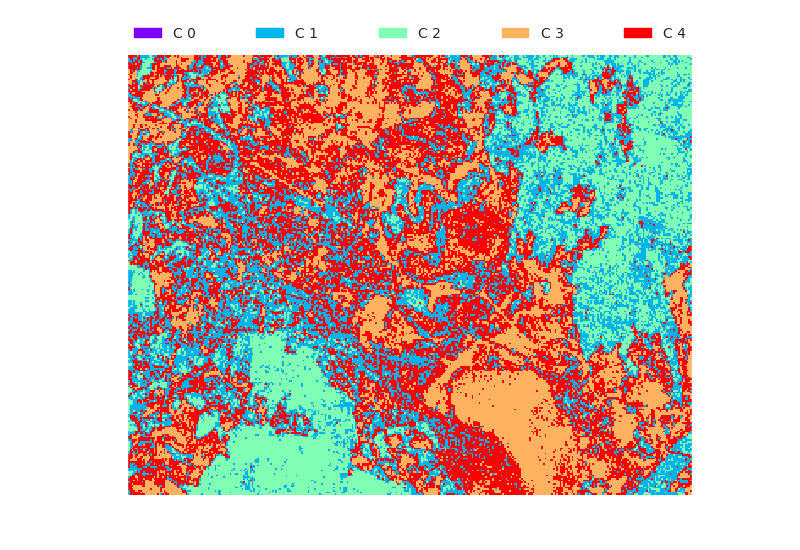
Evaluation results
Agreement with provided tm_classres.mat: equally classified pixels.
Confusion matrix:
| Measure | Class 1 | Class 2 | Class 3 | Class 4 |
|---|---|---|---|---|
| RP | 1,729 | 2,824 | 1,979 | 1,605 |
| RN | 6,408 | 5,313 | 6,158 | 6,532 |
| PP | 1,591 | 1,827 | 2,346 | 2,373 |
| PN | 6,546 | 6,310 | 5,791 | 5,764 |
| TP | 416 | 1,816 | 1,647 | 1,118 |
| FP | 1,175 | 11 | 699 | 1,255 |
| FN | 1,313 | 1,008 | 332 | 487 |
| TN | 5,233 | 5,302 | 5,459 | 5,277 |
| tpr | 0.24 | 0.64 | 0.83 | 0.70 |
| tnr | 0.82 | 1.00 | 0.89 | 0.81 |
| ppv | 0.26 | 0.99 | 0.70 | 0.47 |
| npv | 0.80 | 0.84 | 0.94 | 0.92 |
| acc | 0.69 | 0.87 | 0.87 | 0.79 |
| iou | 0.14 | 0.64 | 0.62 | 0.39 |
| dsc | 0.25 | 0.78 | 0.76 | 0.56 |
| auc | 0.53 | 0.82 | 0.86 | 0.75 |
Two feature images
Here we are using feature images tm1.png, and tm2.png.
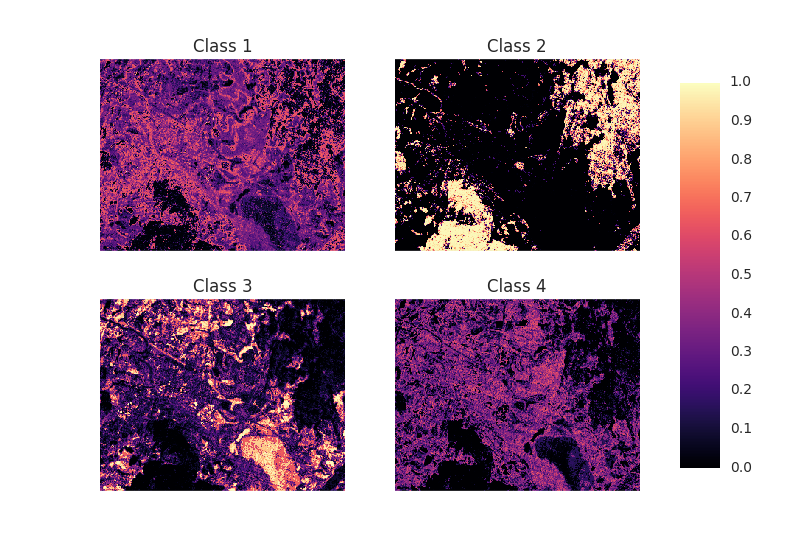
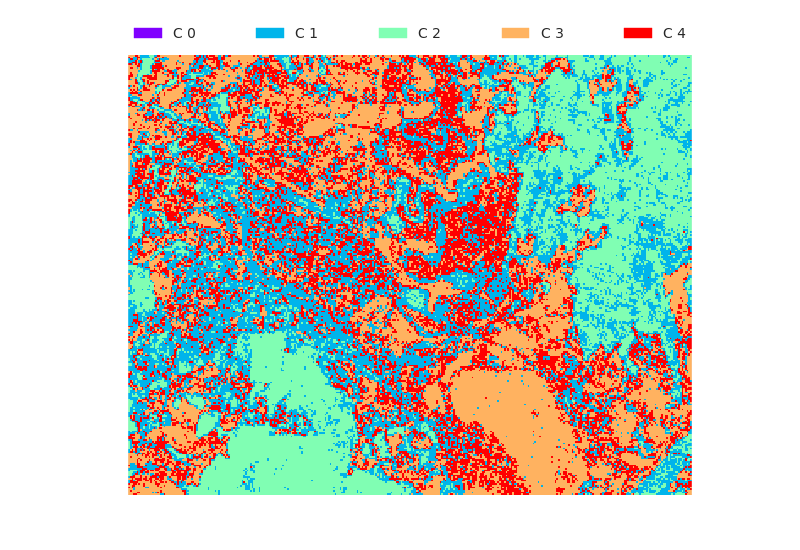
Evaluation results
Agreement with provided tm_classres.mat: equally classified pixels.
Confusion matrix:
| Measure | Class 1 | Class 2 | Class 3 | Class 4 |
|---|---|---|---|---|
| RP | 1,729 | 2,824 | 1,979 | 1,605 |
| RN | 6,408 | 5,313 | 6,158 | 6,532 |
| PP | 1,886 | 2,086 | 2,410 | 1,755 |
| PN | 6,251 | 6,051 | 5,727 | 6,382 |
| TP | 675 | 2,081 | 1,830 | 973 |
| FP | 1,211 | 5 | 580 | 782 |
| FN | 1,054 | 743 | 149 | 632 |
| TN | 5,197 | 5,308 | 5,578 | 5,750 |
| tpr | 0.39 | 0.74 | 0.92 | 0.61 |
| tnr | 0.81 | 1.00 | 0.91 | 0.88 |
| ppv | 0.36 | 1.00 | 0.76 | 0.55 |
| npv | 0.83 | 0.88 | 0.97 | 0.90 |
| acc | 0.72 | 0.91 | 0.91 | 0.83 |
| iou | 0.23 | 0.74 | 0.72 | 0.41 |
| dsc | 0.37 | 0.85 | 0.83 | 0.58 |
| auc | 0.60 | 0.87 | 0.92 | 0.74 |
Four feature images
Here we are using feature images tm1.png, tm2.png, tm3.png, and tm4.png.
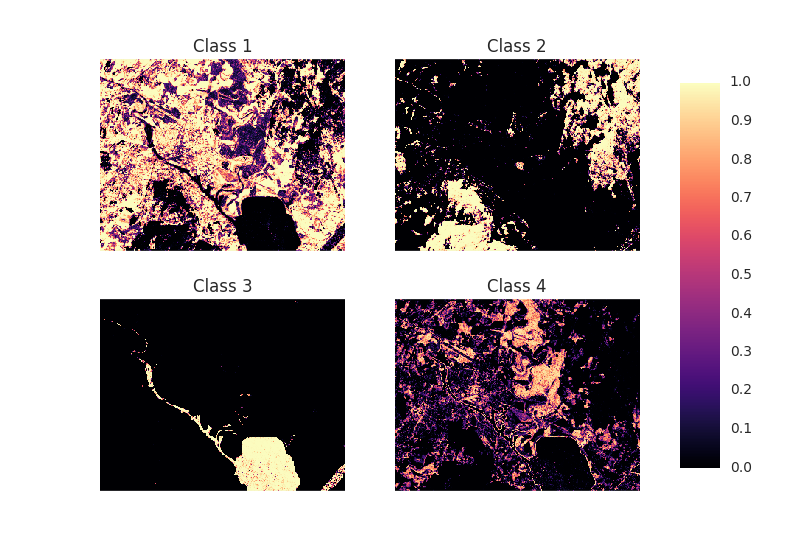

Evaluation results
Agreement with provided tm_classres.mat: equally classified pixels.
Confusion matrix:
| Measure | Class 1 | Class 2 | Class 3 | Class 4 |
|---|---|---|---|---|
| RP | 1,729 | 2,824 | 1,979 | 1,605 |
| RN | 6,408 | 5,313 | 6,158 | 6,532 |
| PP | 2,326 | 2,169 | 1,951 | 1,691 |
| PN | 5,811 | 5,968 | 6,186 | 6,446 |
| TP | 1,466 | 2,163 | 1,946 | 1,405 |
| FP | 860 | 6 | 5 | 286 |
| FN | 263 | 661 | 33 | 200 |
| TN | 5,548 | 5,307 | 6,153 | 6,246 |
| tpr | 0.85 | 0.77 | 0.98 | 0.88 |
| tnr | 0.87 | 1.00 | 1.00 | 0.96 |
| ppv | 0.63 | 1.00 | 1.00 | 0.83 |
| npv | 0.95 | 0.89 | 0.99 | 0.97 |
| acc | 0.86 | 0.92 | 1.00 | 0.94 |
| iou | 0.57 | 0.76 | 0.98 | 0.74 |
| dsc | 0.72 | 0.87 | 0.99 | 0.85 |
| auc | 0.86 | 0.88 | 0.99 | 0.92 |
All feature images
Here we are using all feature images tm1.png, tm2.png, tm3.png, tm4.png, tm5.png, and tm6.png.
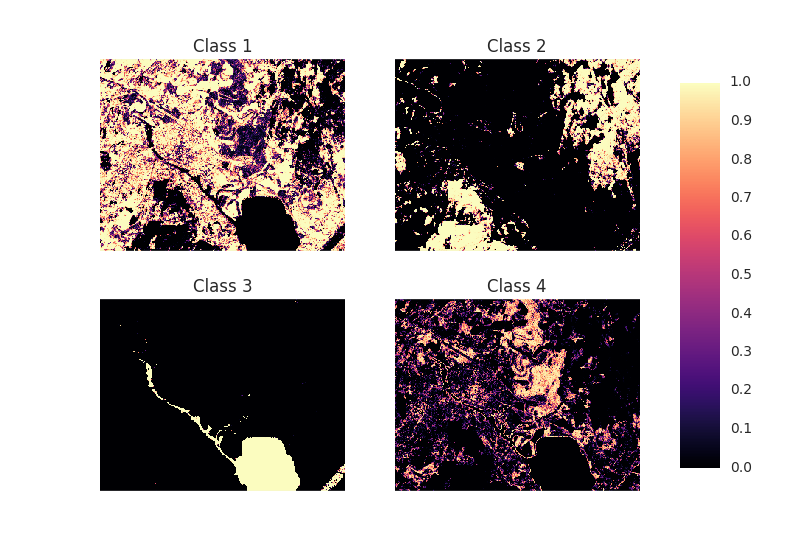
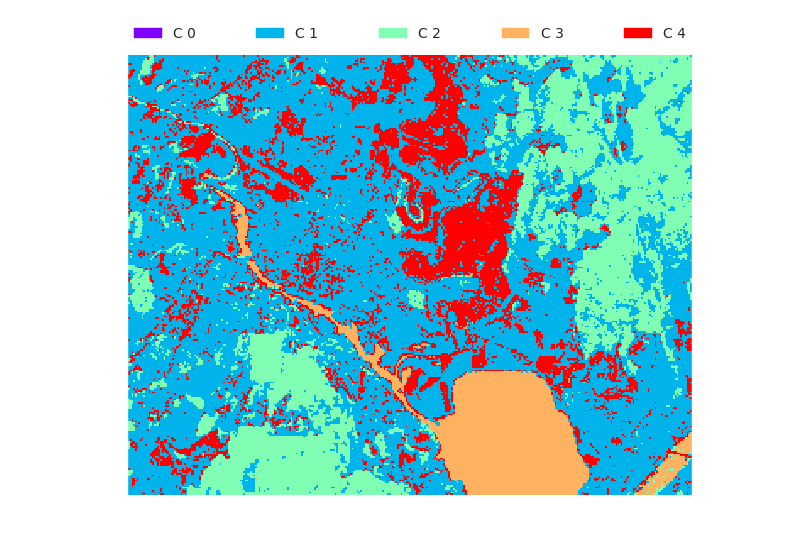
Evaluation results
Agreement with provided tm_classres.mat: equally classified pixels.
Confusion matrix:
| Measure | Class 1 | Class 2 | Class 3 | Class 4 |
|---|---|---|---|---|
| RP | 1,729 | 2,824 | 1,979 | 1,605 |
| RN | 6,408 | 5,313 | 6,158 | 6,532 |
| PP | 2,214 | 2,316 | 1,954 | 1,653 |
| PN | 5,923 | 5,821 | 6,183 | 6,484 |
| TP | 1,474 | 2,311 | 1,953 | 1,390 |
| FP | 740 | 5 | 1 | 263 |
| FN | 255 | 513 | 26 | 215 |
| TN | 5,668 | 5,308 | 6,157 | 6,269 |
| tpr | 0.85 | 0.82 | 0.99 | 0.87 |
| tnr | 0.88 | 1.00 | 1.00 | 0.96 |
| ppv | 0.67 | 1.00 | 1.00 | 0.84 |
| npv | 0.96 | 0.91 | 1.00 | 0.97 |
| acc | 0.88 | 0.94 | 1.00 | 0.94 |
| iou | 0.60 | 0.82 | 0.99 | 0.74 |
| dsc | 0.75 | 0.90 | 0.99 | 0.85 |
| auc | 0.87 | 0.91 | 0.99 | 0.91 |
Equal variance
Here we are using all feature images tm1.png, tm2.png, tm3.png, tm4.png, tm5.png, and tm6.png.
But contrary to the examples above, we assume independent features with equal
variances, and equal class variance. With this, the covariance matrix becomes
In order to estimate the variance, I chose the unbiased least square, pooled variance estimator (see e.g. wikipedia)
where is the number of training examples for feature in class , and
is the variance for each feature in each class , and is the feature value (not vector) in class . Note that, since in this example the priors are assumed uniform over the classes, we do not actually need to compute the variance estimate.
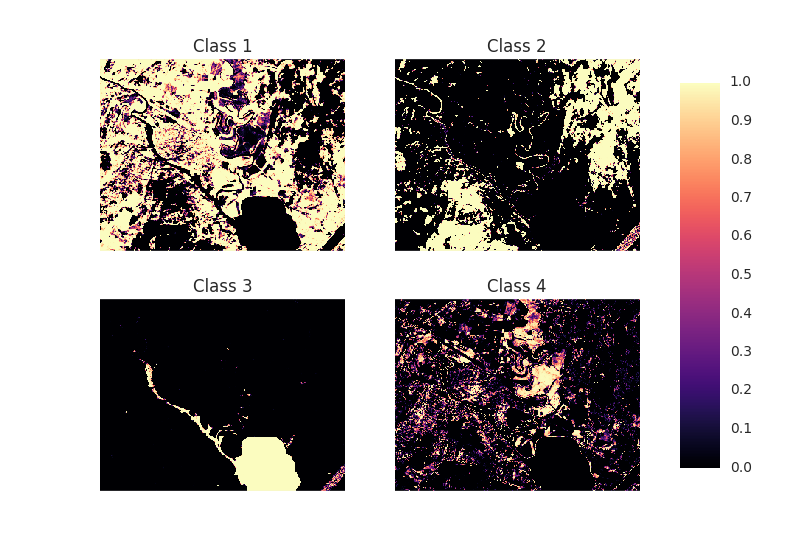
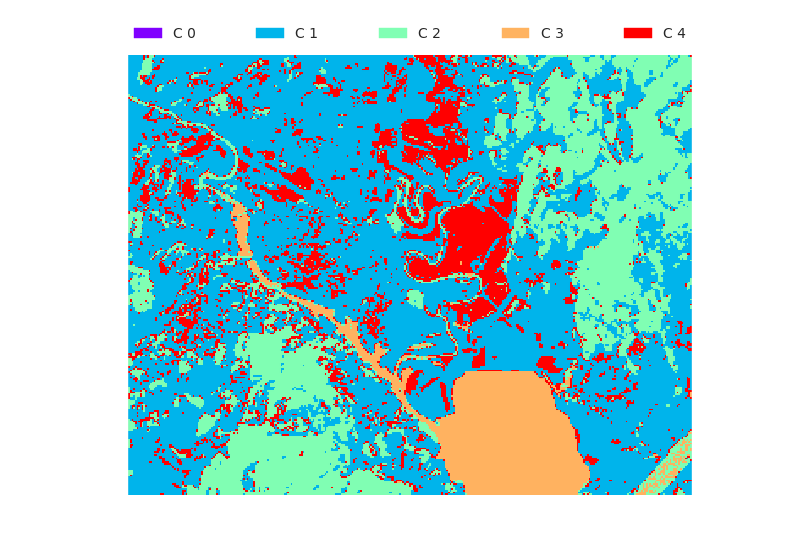
Evaluation results
Agreement with provided tm_classres.mat: equally classified pixels.
Confusion matrix:
| Measure | Class 1 | Class 2 | Class 3 | Class 4 |
|---|---|---|---|---|
| RP | 1,729 | 2,824 | 1,979 | 1,605 |
| RN | 6,408 | 5,313 | 6,158 | 6,532 |
| PP | 2,207 | 2,306 | 1,975 | 1,649 |
| PN | 5,930 | 5,831 | 6,162 | 6,488 |
| TP | 1,373 | 2,275 | 1,968 | 1,276 |
| FP | 834 | 31 | 7 | 373 |
| FN | 356 | 549 | 11 | 329 |
| TN | 5,574 | 5,282 | 6,151 | 6,159 |
| tpr | 0.79 | 0.81 | 0.99 | 0.80 |
| tnr | 0.87 | 0.99 | 1.00 | 0.94 |
| ppv | 0.62 | 0.99 | 1.00 | 0.77 |
| npv | 0.94 | 0.91 | 1.00 | 0.95 |
| acc | 0.85 | 0.93 | 1.00 | 0.91 |
| iou | 0.54 | 0.80 | 0.99 | 0.65 |
| dsc | 0.70 | 0.89 | 1.00 | 0.78 |
| auc | 0.83 | 0.90 | 1.00 | 0.87 |
Task 2
Given the mean value for each class, the decision boundary between two classes using a minimum distance classifier is the line containing all points that are equidistant to the two class means.
By using the actual data from the Iris flower data set from Ronald Fisher (see more here), we can compute the actual means and decision boundaries.
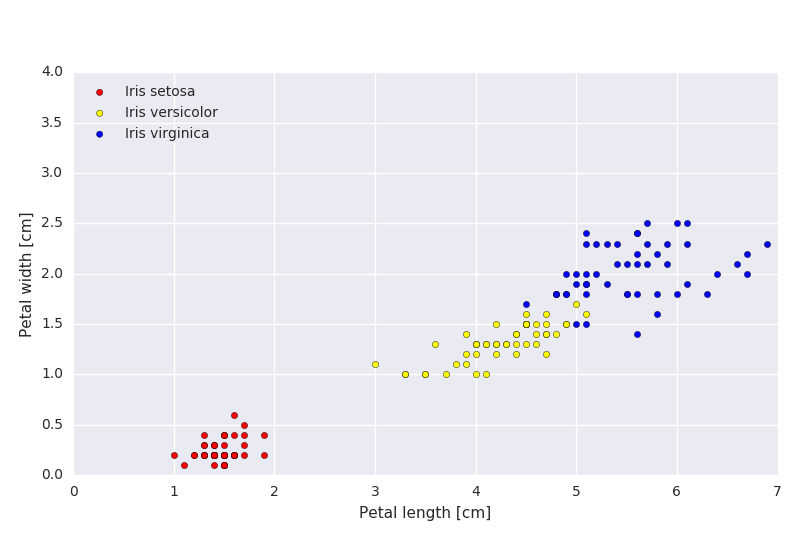
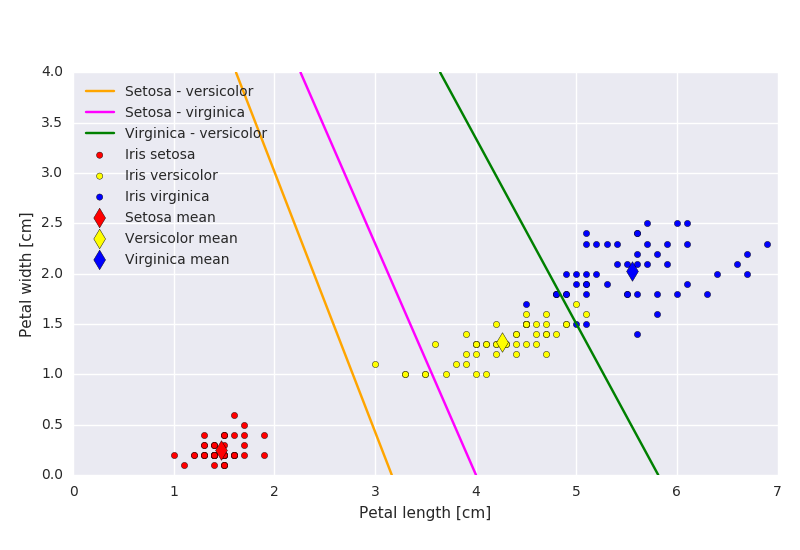
Task 3
A classifier that uses Euclidean distance, computes the distance from point to class as
Classification with this rule is equivalent to using the discrimination function
That is we associate point with the class that has a class mean closest to the point, therefore we get a discrimination function
which is what we were asked to show.
Task 4
Assuming equal class prior and gaussian likelihood with class mean and equal covariance matrix for each class , the discrimination function becomes (see the notes
Now, for a , invertible matrix
the inverse matrix is given by
where the determinant is computed as
This can be checked via the definition , where is the identity matrix.
a)
In our case,
making the inverse equal to
The class means are
which, when we compute the discrimination function for each class mean, the feature vector
is classified to class 2.
b)
Given a collection of points with mean vector and covariance matrix , the Mahalanobis distance from a point to the set of points is given by
Using the covariance matrix above, and with a mean vector
the distance plot (with contour lines) is
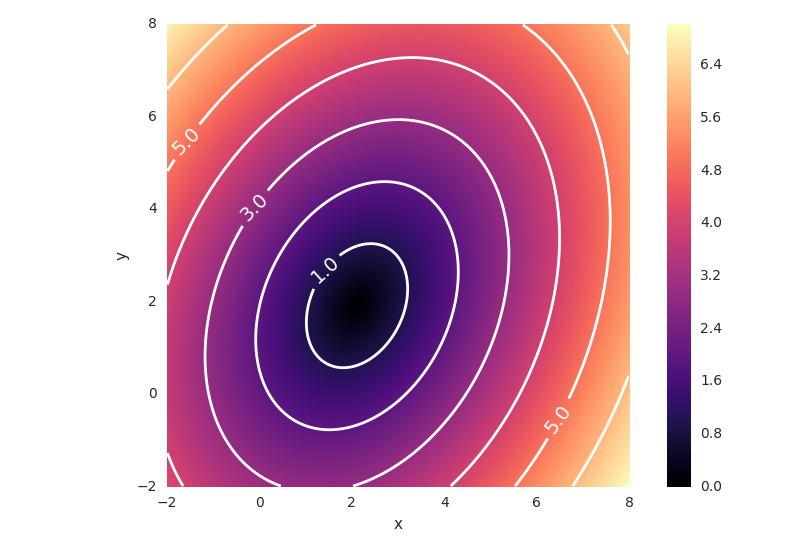
This could also have been found by computing the eigenvectors and eigenvalues (for ) of the covariance matrix
All points on the ellipse with major and minor axis proportional to the largest and smallest eigenvalue of , and which orientation is given by the corresponding eigenvectors, will then have an equal Mahalanobis distance from the mean vector (and thus constitute the contours shown in Figure 4.1, for different distances).
Task 5
This task is similar to Task 4 a), just with different class means and feature vector. The feature vector is classified as class 1.